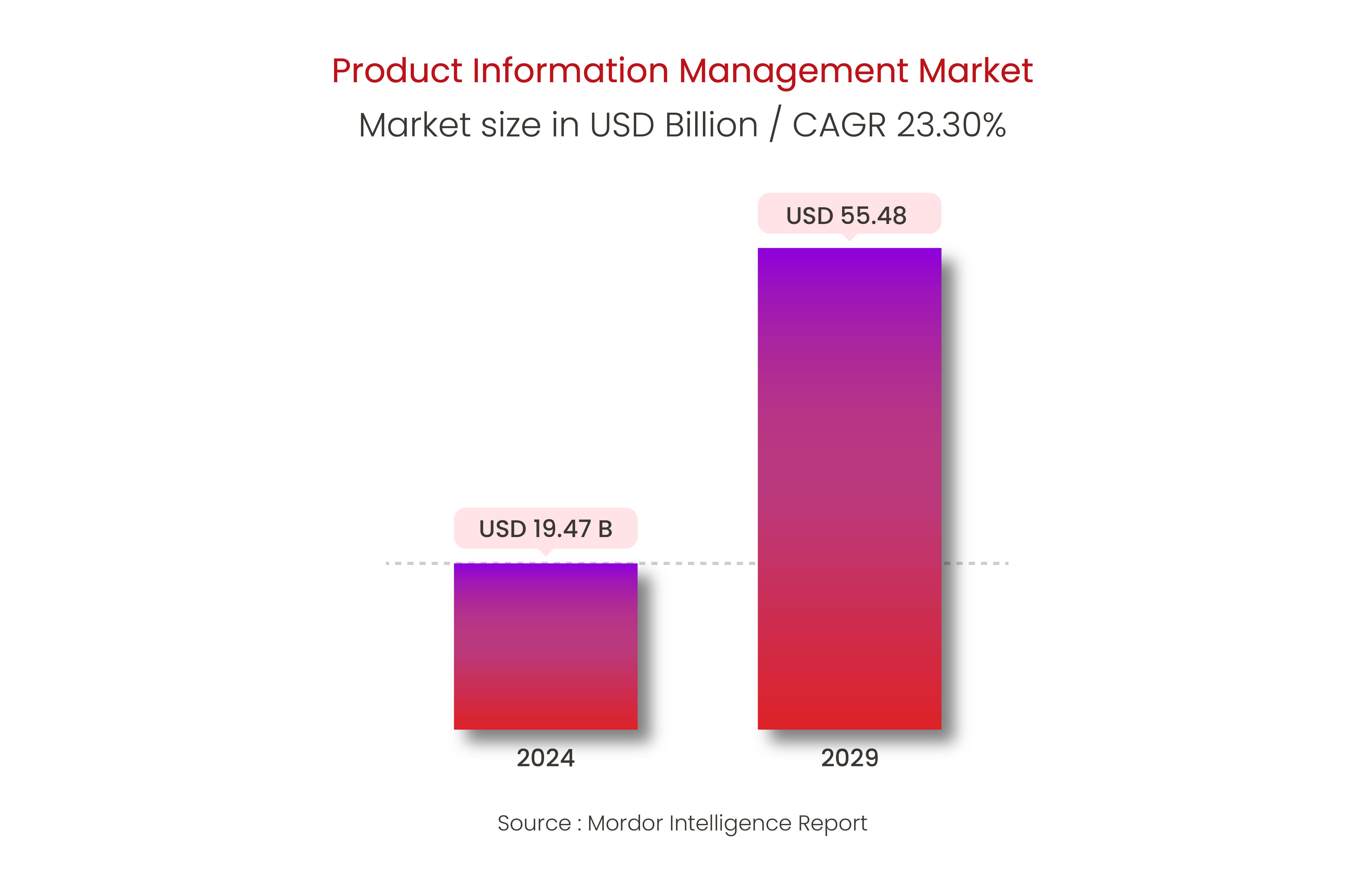According to a recent report from Mordor Intelligence, the PIM Market size is estimated at USD 19.47 billion in 2024, and is expected to reach USD 55.48 billion by 2029, growing at a CAGR of 23.30% during the forecast period (2024-2029).
Product Information Management Market
Market size in USD Billion / CAGR 23.30%
Source: Mordor Intelligence Report

The adoption of product information management (PIM) is expected to be the highest in the retail and e-commerce industry due to the growing focus on enhancing customer experience and the adoption of artificial intelligence and retail analytics tools in the retail and e-commerce sectors.
Product Information Management (PIM) Market
CAGR (%) by Region, Global

Source : Mordor Intelligence Report Product Information Management (PIM) 7
Data is everywhere around us. With a massive growth in data generation, information flowing out of this data has become the backbone of most organizations and businesses. A Product Information Management (PIM) is a potent tool to derive benefits from the huge bundle of raw data. Recently, more professionals have begun to pay attention to PIM systems due to the growing demand for a better customer experience. Management guru Stephen Rogers of R3 Consulting correctly says, ‘‘A PIM provides a single repository for storing all outgoing product data. A central repository system of record gives retailers a single view of the product data to the entire enterprise so everyone sees the same information.’’
PIM softwares gained strong traction due to its growing application possibilities in various industries, especially the retail and e-commerce ones. PIMs are helping offline retail outlets grow in digital spaces and assisting new concepts, like Amazon Go, leveraging customer data to build specific products. With the expansion of retail and e-commerce businesses and the growing amount of product data to be managed, the adoption of PIM systems is on the rise.
The demand for software-as-a-service (SaaS) versions of business applications has recently increased dramatically. Cloud-based PIM platforms are becoming increasingly popular among organizations that prefer the ease of deployment and collaboration, affordability, and the ability to scale.






